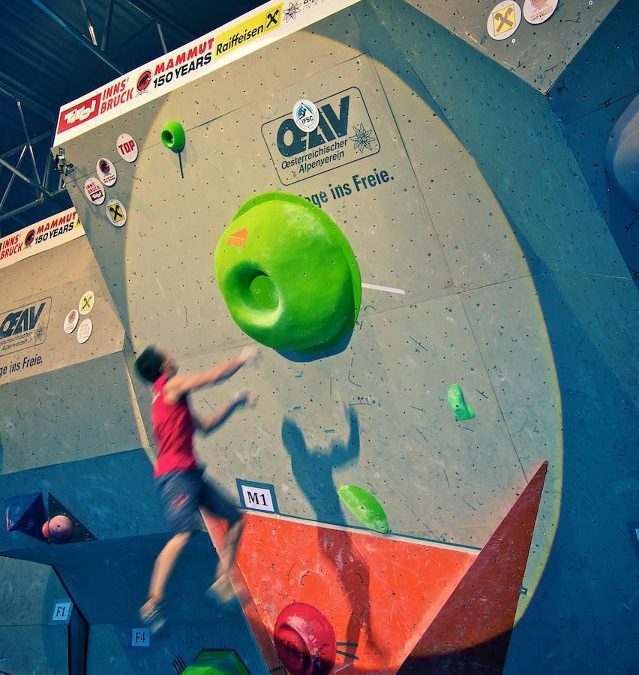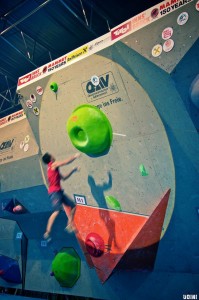The Competition Format: Continuing IFSC World Cup Hamilton June 1-2 Pre-Comp Coverage
If you not familiar with bouldering competitions, or even if you’ve spectated at Tour de Bloc Comps, you’ll see a few things done differently at a World Cup.


When the world’s best comp climbers come to Hamilton on the weekend they will be going through a competition format that many of them know very well. The rules require that the problems be fully visible to the spectator area, so if you are one of the lucky ticket holders, you will be treated to some of the best and most dynamic climbing action anywhere. Even if you are unable to attend in person, the IFSC will live stream the entire competition and follow us on twitter and Facebook as we will be live texting all the of the event.
If you aren’t familiar with bouldering competitions, or even if you’ve spectated at Tour de Bloc Comps, you’ll see a few things done differently at a World Cup. Most obviously, there will be three rounds, instead of two, for competitors. And unlike Tour de Bloc or many local competitions, the opening round will not be “Friendly” format, where competitors will get to see one another climb and work on the same problem together.
Instead, the opening two rounds will be more like the finals of a TdB comp, where competitors will stay in isolation zone (or “Iso”), and await their turn to attempt each of the problems, five in qualifier, four in semi-final. Each competitor will have five minutes to attempt each problem, and then a five minute rest following. Competitors will be ranked according to the most number of top outs, followed by attempts to top out, if there is a tie, it will be broken by the number of “Bonus” hold reached and the attempts to get there.
For the final round, which will take the top six qualifiers from the semi final, competitors will face yet another format, with six problems in total. In the final, all the finalist will get a one minute preview of the problem, before each pair (one man, one woman) tackle it in turn. Again competitors will be isolated, and not able to see how or what their competition is doing. Each competitor will have four minutes to attempt each problem, if the pair of competitors are able to complete the problem before the allotted the time, the next pair will be up immediately. Theoretically reducing the rest time for those following and introducing a bit of psychological pressure.
This format also allows climbers to strategize and guess at their place in the standings because when they see who goes out and hear the crowd’s response, they can surmise who has sent which problem. In traditional comps, climbers can’t tell clearly where they stand until everyone’s through.
Tomorrow we’ll continue our ongoing coverage by exploring the route setting procedures for this challenging and rigorously organized event.


